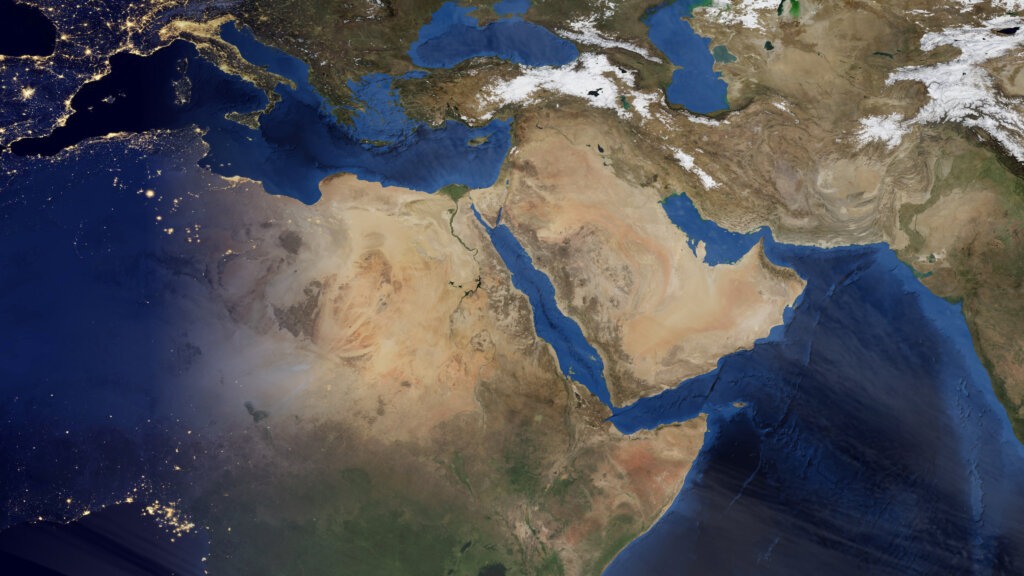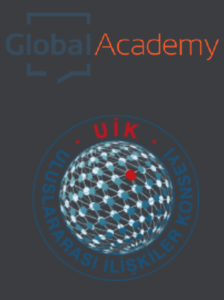
One of the questions being asked most frequently today in connection with the South Caucasus is whether a compromise between Azerbaijan and Armenia is possible. My short answer is “very unlikely” as I see a developing wider problem in the character of the conflict between them and the place Karabakh holds in the identities of two nations.
While the Armenians on average blame the current Azerbaijani government for refusing to recognize Nagorno-Karabakh as an independent state, most of them fail to understand the Azerbaijani vision of the history of Nagorno-Karabakh conflict and the significance of Karabakh for the Azerbaijani people.
For the Azerbaijanis, Karabakh is an important element of identity, which was formed long before the current President Ilham Aliyev came to power. The territory of Qarabağ (comprising both Mountainous -or Nagorno– Karabakh and Lower Karabakh, which includes the territory of the seven districts occupied by Armenian forces) holds great significance in Azerbaijani history. Karabakh is traditionally perceived as the cradle of Azerbaijani culture and the birthplace of many Azerbaijani composers, singers, writers, artists and intellectuals. Shusha, the historical capital of Karabakh is called the “St. Petersburg of Azerbaijan”.
The ideational significance of the region, along with the memory of the mass evictions of the Azerbaijanisfrom Armenia is one of the main reasons why the Nagorno-Karabakh conflict and the possibility of a compromise are so sensitive for the Azerbaijani society.For the Azerbaijani people, the first domino fell in Armenia in November 1987, when ethnic Azerbaijanis and Muslim Kurds were evicted and killed, several months before the pogrom in Sumgait (De Waal 2003; and Yunusov 2005). It is hardly possible for the Azerbaijani public to forget the tragedy of Khojaly of February 1992 and it is even harder to imagine that those who committed this criminal act were never punished.
Further, the trauma caused by the 1988-1994 war in the Azerbaijani society is not healed yet, as 600,000 internally displaced persons (IDPs) from Nagorno-Karabakh and surrounding districts occupied by Armenia are still not able to return their homes. As the Azerbaijanis used to form the absolute majority (97%) in the seven occupied districts around Nagorno-Karabakh, the consequences of this war were much more catastrophic compared to other so-called “frozen conflicts” in the post-Soviet space. While in Transnistria, Moldovans still comprise around 33% of the population, in Abkhazia the percentage of Georgians is 19% and in Crimea 15% of the population is Ukrainians, in Karabakh (including both Nagorno-Karabakh and the seven districts) the number of Azerbaijanis left on these territories is 0%. The IDPs of Karabakh, together with additional 200,000 Azerbaijani refugees from Armenia itself, comprise roughly about 8% of the Azerbaijan’s population. Most of those, who used to be farmers living in rural areas, had to resettle in big cities and start their life from scratch; today many of them are still unemployed.
All these facts play a big role in limiting Azerbaijani state position on Nagorno-Karabakh and increase its vulnerability to the Azerbaijani public opinion. While being engaged in war in Karabakh since 1988, several governments were forced to resign as the situation worsened at the front line, from Vezirov to Mutalibov and Elchibey. At times, the leaders were forced by their dissenting public to take tougher stance. For example, the so-called Goble plan of a territorial swap was put forward in 1999 to unite the Nagorno-Karabakh with Armenia through the Lachin corridor in exchange for some territories of the Meghri district of Armenia that would connect Azerbaijan with its exclave of Nakhchivan. While President Heydar Aliyev appeared favorable towards the plan, he faced with the negative reaction of his advisors, who resigned over this issue in October 1999. As a result, the negotiations failed and the diplomatic impasse persisted.
Similarly, in Armenia, too, when President Levon Ter-Petrosyan appeared ready for concessions in late 1990s, his position in favor of a compromise that was also acceptable to Azerbaijan was not accepted within Armenia. At the time, President Ter-Petrosyan argued that Yerevan would sooner or later have to compromise due to the changing geopolitical climate. However, he had to resign shortly in February 1998 as a result of widespread public protests and the discontent of some of the governing elites.
The position of the Armenian public in this issue can also be explained with the historical importance of the province for the Armenian identity. This intransigence can also be traced in the historical development of the Nagorno-Karabakh conflict compared to other ethnic conflicts in the post-Soviet space. Notably, while in the late 1980s the first protests in South Ossetia demanded granting the status of Autonomous Republic to the existing Autonomous Oblast (“province” in Russian) with the extension of the rights for the Ossetian minority in Georgia, the Armenians of Nagorno-Karabakh did not claim further rights within autonomy. Both during the last years of the Soviet period and the years after gaining independence, the majority of Armenians argued for unification with Armenia or independence from Azerbaijan.
Since the active phase of the conflict between 1988 and 1994 ended with a ceasefire, the OSCE Minsk Group, the main international mediator between Azerbaijan and Armenia, has presented several packages to both sides regarding possible ways of conflict resolution. However, for a number of reasons, neither side could reach a consensus view within their own country on any of these projects. Nevertheless,since 2007, both Azerbaijan and Armenia agreed to follow the so-called Madrid Principles of a “step-by-step” solution to the conflict, including the de-occupation of adjacent districts, the return of Azerbaijani refugees, and negotiations on the final status of Nagorno-Karabakh. However, no real measures were ever taken to implement this plan, although the territorial integrity of Azerbaijan is recognized today by the international community and the necessity of the withdrawal of the Armenian troops from occupied territories is noted in the decisions of several international organizations, including the UN Security Council resolutions 822, 853, 874, and 884 (1993) calling for the “immediate complete and unconditional withdrawal of occupying forces” from the Azerbaijani territory, as well as the Council of Europe Parliamentary Assembly resolution 1416 (2005), the Organization of the Islamic Conference resolution of 10/11 (2008) and the NATO Lisbon Summit Declaration (2010).
The unresolved status of the conflict and the futility of negotiations, together with the lack of dialogue between the societies and the lack of any efforts to reassess history and the mistakes of the past during the last thirty years have led to an even further radicalization of both societies. Today most political parties in Azerbaijan take a much more radical stance than the current Azerbaijani government. According to a survey conducted by Aslanov and Samedzade in 2017, all reviewed parties unequivocally believe that Azerbaijan’s territorial integrity should be guaranteed, and some even deny any right of autonomy for Nagorno-Karabakh. On the other hand, the incumbent government offers the highest degree of autonomy to the region.
In Armenia, the position of society is no less radical, as the public stands against any kind of compromise with Azerbaijan. One can learn the position of Armenian opposition leaders from their interviews given to Azerbaijani journalist, Shahin Hajiyev, in February 2019, where they acknowledged that if any Armenian government were to agree to some sort of a compromise solution, it would be deposed within twenty-four hours. The leaders of the self-proclaimed “Nagorno-Karabakh Republic” have also repeatedly rejected the right of Azerbaijani refugees to return to their lands. They also stood against any kind of dialogue between the two communities of Nagorno Karabakh.
For the Azerbaijani side, recognizing the independence of Nagorno-Karabakh without the right of Azerbaijani refugees to return is seen as deeply unfair and unacceptable. There was also no progress regarding the return of the adjacent districts, even though they were not primarily claimed by the Armenian side to be a part of Nagorno-Karabakh. Moreover, these districts were part of the negotiations until 2006 when the self-proclaimed government of Nagorno-Karabakh adopted a new constitution, formally incorporating the seven districts to the territory of the former Nagorno Karabakh Autonomous Oblast.
In the meantime, the Velvet Revolution of 2018 and the onset of the democratization processes in Armenia brought some hope in Azerbaijan, as Nikol Pashinyan, the current Prime Minister, was considered to be representing a new political elite that would be ready for a different sort of regional engagement and a more rational foreign policy. However, his actions such as the settlement of Lebanese Armenians to Nagorno-Karabakh, the inauguration of the self-proclaimed president in Shusha, or the uttering of statements such as “Artsakh is Armenia, period” were perceived in Azerbaijan as being extremely provocative. Pashinyan’s policy seemed to be motivated by an attempt to consolidate wider power after the twenty-year rule of the Karabakh clan, by corresponding with the interests of society and gaining public support.
In situations where societies on both sides of conflicting states are very reluctant for any kind of concession being made to the other side, it is very unlikely that either side will accept a compromise anytime soon. It looks like a “game of chicken” with neither side willing or able to swerve, setting the stage for catastrophic consequences for both sides. Hence, while many Armenians call for peace and a ceasefire to restore the status quo, neither a ceasefire nor maintaining the status quowill solve the problem due to the Azerbaijani opposition to the continuation of the status quo in the region. At the same time, the fact that Azerbaijan has not been able to mobilize the world’s attention to its cause and enlist wider support, despite the numerous UN Security Council resolutions supporting its position, the only way forward looks increasingly likely through more conflict.
Obviously, only a real peace treaty, which will protect the rights of both Azerbaijani and Armenian communities, would end the conflict once and for all. A ceasefire alone cannot be a stable option. Such a peace treaty will also require the involvement of third parties, which have to show their absolute impartiality and respect to each side. Otherwise, the continuation of this war for an extended period might have catastrophic consequences for the population and the economies of both countries. And, most importantly, it will take years, if not decades, to restore trust and heal the wounds of the past and present wars in both societies.
_______________________________________________________________________________________________

Nazrin Gadimova-Akbulut is a Research Fellow at the Center for International and European Studies (CIES) in Istanbul. She received her PhD in international relations from Kadir Has University, where she wrote her dissertation on the interrelation between national identities and regional fragmentation in the South Caucasus. Her academic research interests include regionalism, identities, security community and conflict resolution in the South Caucasus and Eurasia.
To cite this work : Nazrin Gadimova-Akbulut, “The conflict of identities and the possibility of a compromise between Azerbaijan and Armenia”, Panorama, Çevrimiçi Yayın, 19 Ekim 2020, https://www.uikpanorama.com/blog/2020/10/19/the-conflict-of-identities-and-the-possibility-of-a-compromise-between-azerbaijan-and-armenia
Copyright@UIKPanorama.All on-line and print rights reserved. Opinions expressed in this work belongs to the author(s) alone, and do not imply endorsement by the IRCT, the Editorial Board or the editors of the Panorama.


